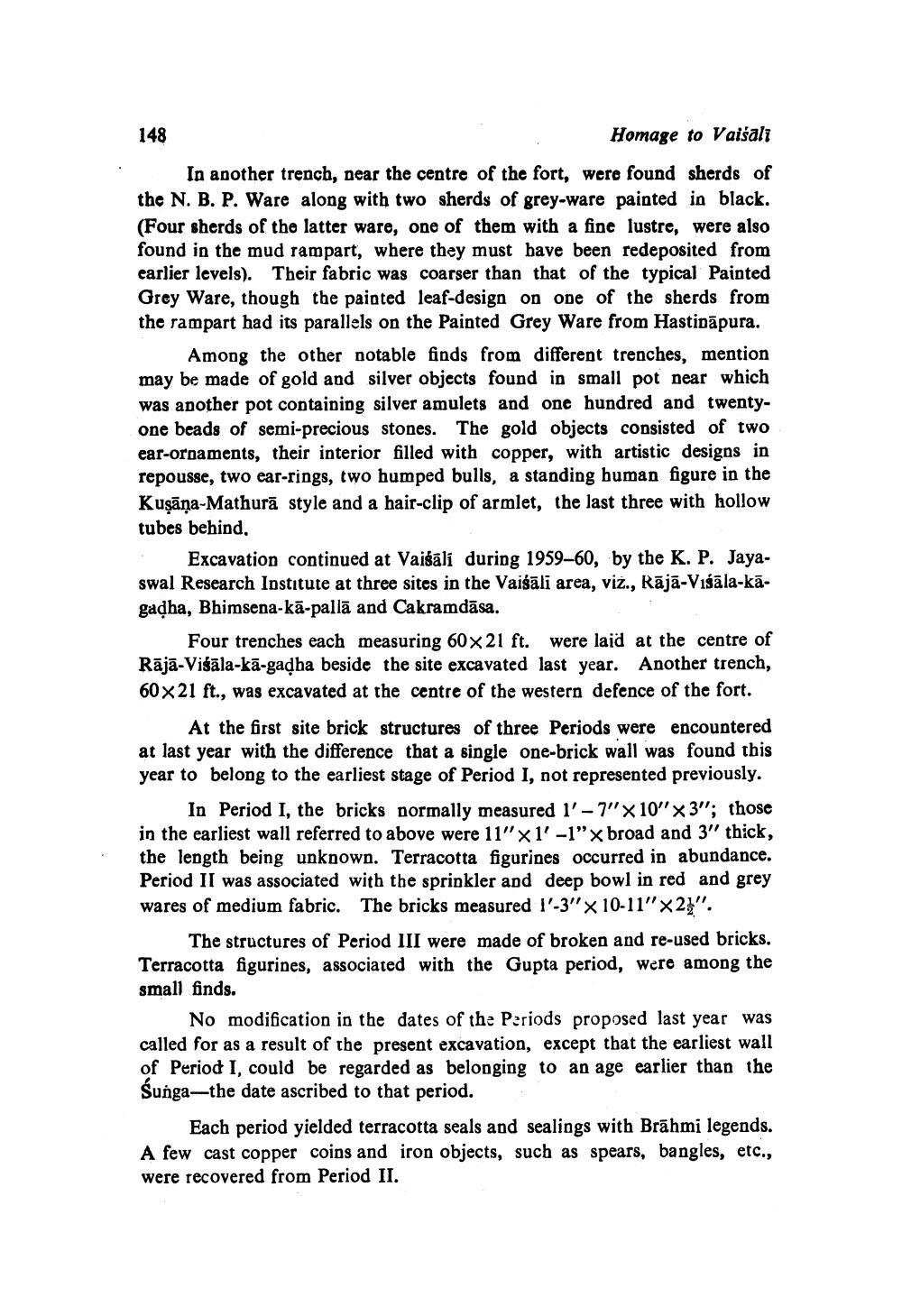________________ 148 Homage to Vaisali In another trench, near the centre of the fort, were found sherds of the N. B. P. Ware along with two sherds of grey-ware painted in black. (Four sherds of the latter ware, one of them with a fine lustre, were also found in the mud rampart, where they must bave been redeposited from earlier levels). Their fabric was coarser than that of the typical Painted Grey Ware, though the painted leaf-design on one of the sherds from the rampart had its parallels on the Painted Grey Ware from Hastipapura. Among the other notable finds from different trenches, mention may be made of gold and silver objects found in small pot near which was another pot containing silver amulets and one hundred and twentyone beads of semi-precious stones. The gold objects consisted of two ear-ornaments, their interior filled with copper, with artistic designs in repousse, two ear-rings, two humped bulls, a standing human figure in the Kusana-Mathura style and a hair-clip of armlet, the last three with hollow tubes behind. Excavation continued at Vaisali during 1959-60, by the K. P. Jayaswal Research Institute at three sites in the Vaigali area, viz., Raja-Visala-kagadha, Bhimsena-ka-palla and Cakramdasa. Four trenches each measuring 60X21 ft. were laid at the centre of Raja-Visala-ka-gadha beside the site excavated last year. Another trench, 60 x 21 ft., was excavated at the centre of the western defence of the fort. At the first site brick structures of three Periods were encountered at last year with the difference that a single one-brick wall was found this year to belong to the earliest stage of Period I, not represented previously. In Period I, the bricks normally measured 1'-7" x 10" X 3''; those in the earliest wall referred to above were 11" x 1"-1" x broad and 3" thick, the length being unknown. Terracotta figurines occurred in abundance. Period II was associated with the sprinkler and deep bowl in red and grey wares of medium fabric. The bricks measured 1-3'' x 10-11" x 2". The structures of Period III were made of broken and re-used bricks. Terracotta figurines, associated with the Gupta period, were among the small finds. No modification in the dates of the Periods proposed last year was called for as a result of the present excavation, except that the earliest wall of Period I, could be regarded as belonging to an age earlier than the Sunga--the date ascribed to that period. Each period yielded terracotta seals and sealings with Brahmi legends. A few cast copper coins and iron objects, such as spears, bangles, etc., were recovered from Period II.




